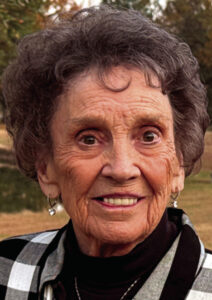Alternative feed source for beef cattle
By By Justin Rodgers / 4-H youth agent
June 30, 2002
The large number of poultry houses located in Mississippi could have a positive effect on the state's beef cattle market.
With approximately 5,000 poultry houses, Mississippi generates about 100 tons of poultry litter per house for a combined total of 1 billion pounds annually. More than 90 percent of these are broiler houses that generate a waste product consisting of manure, sawdust or wood shavings, feed and feathers that is suitable for use as a feed or fertilizer.
Broiler litter can be used by cattlemen as a fertilizer to increase forage quality and quantity. Used as livestock feed, it can decrease feeding costs during the winter months.
Broiler litter could supply the feed requirements of 80 percent of the total beef cowherd in Mississippi if used over a 120-day wintering period.
While broiler litter is valuable as a fertilizer, it has a greater economic potential as a feed source for beef cattle, provided the broiler litter is of sufficient quality to allow for adequate consumption.
Broiler litter is relatively inexpensive to purchase under current market conditions, with transportation normally the greatest cost concern. High quality broiler litter has approximately the nutrient equivalent of alfalfa hay, with feed-grade broiler litter often having a crude protein content of 25 percent and a TDN value of 60 percent.
As an energy source, broiler litter has 10 percent to 40 percent the feeding value of No. 2 corn and can replace 15 percent to 25 percent of the grain ration. As a protein supplement, it has 50 percent to 55 percent the value of soybean meal (41 percent crude protein), and may replace 25 percent of the oil meal supplement of a diet (Ensminger, 1977).
Broiler litter as a feed source for beef cattle is well-documented and researched (Bagley and Evans, 1995). Most data suggests that beef cattle fed a mixture of broiler litter and grain and/or silage will have similar to slightly lower weight gains than those cattle fed diets of grain or silage alone, depending on the feed component and percentage being replaced by broiler litter. McCaskey et al. (1994) report gains of 2.53 pounds per day when steers were fed a concentrate diet, versus 2.12 pounds per day for steers fed a 50 percent broiler litter and 50 percent corn diet.
Using it as a livestock feed is an excellent method of disposal of excess broiler litter. Feeding to animals allows for enzymatic breakdown of nutrients inside the rumen, which alleviates the leaching and water quality problems associated with fertilizer use and land disposal. The use of broiler litter appears to have potential in the cattle industry, not only as a pasture fertilizer but also as a supplemental feedstuff.
While the diets containing broiler litter, with the exception of the 50 percent SBH-50 percent BL diet, yielded a lower ADG than did the control diet (corn + soybean meal), factors such as cost of gain, wintering cost and the waste disposal potential should be considered in the final evaluation of broiler litter as a feed supplement for beef cattle.
Lower weight gains may be economically acceptable if the cost per pound to produce beef is reduced. Substituting part of the grain easily attains this reduction of input cost and/or silage diet with the relatively inexpensive broiler litter. Producers should purchase only broiler litter that meets high quality feeding standards as determined by nutrient analysis.
Feeding poor quality broiler litter to cattle will result in a low feed intake, causing decrease or even negative weight gains and increased production costs. While total production cost and profit potential were not calculated in this particular research project, feed cost per pound of weight gain was calculated.
Although the weight gains from broiler litter treatments were generally lower than that from the control treatment, feed cost per pound of gain and winter feeding cost were reduced from 17 percent to 54 precent by using broiler litter as a feed substitute for more expensive grain products. The broiler litter-based supplements all yielded beef replacement heifers that had grown over the winter months and were ready for grazing on summer pastures. With good farm management, weight gains should increase, and purchasing feeds in bulk quantities should further reduce expenses allowing for a more profitable farming operation.
For more information on using broiler litter as a feed supplement for beef cattle, contact the Lauderdale County Extension Service at 482-9764.










